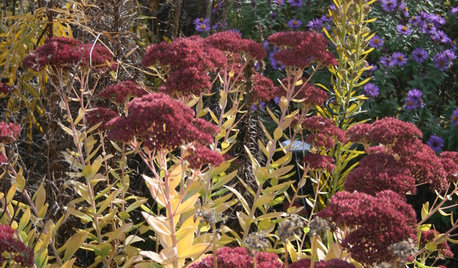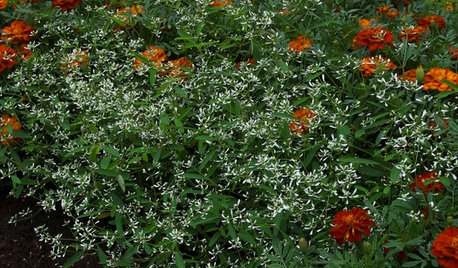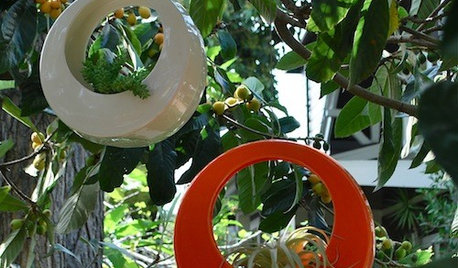Amaranths
rootdiggernc
21 years ago
Related Stories

GARDENING GUIDESGet a Head Start on Planning Your Garden Even if It’s Snowing
Reviewing what you grew last year now will pay off when it’s time to head outside
Full Story
GARDENING GUIDESThe Art of Green Mulch
You can design a natural garden that doesn’t rely on covering your soil with wood and bark mulch
Full Story
GARDENING GUIDES8 Perennials for Great Fall Color
Trees haven't cornered the market on autumn splendor. Add these flowering perennials for a foliage sight to behold
Full Story
FALL GARDENING7 Reasons Not to Clean Up Your Fall Garden
Before you pluck and rake, consider wildlife, the health of your plants and your own right to relax
Full Story
GARDENING GUIDES7 Enticing, Little-Known Annuals of the Plant World
Give these underutilized garden wonders a chance by discovering their draws
Full Story
GARDENING GUIDESOrganic Matters: Thwart Insect Pests With Trap Crops
Add a few sacrificial plants to your garden to lure insects away from the harvest
Full Story
CONTAINER GARDENS7 Deer-Resistant Flowers for Your Summer Containers
Grow these as protection for edibles or just for their colorful beauty — deer might not like them, but everyone else will
Full Story
KITCHEN MAKEOVERSKitchen of the Week: Rich Materials, Better Flow and a Garden View
Adding an island and bumping out a bay window improve this kitchen’s layout and outdoor connection
Full Story
GARDENING AND LANDSCAPING40 Great Gifts for Gardeners
What to Get for Green-Thumb Types. It's a No-Gnome Zone.
Full Story





joycrick
flatwoods_farm
Related Professionals
West Milford Landscape Architects & Landscape Designers · Harrison Landscape Architects & Landscape Designers · Hershey Landscape Architects & Landscape Designers · Brandon Landscape Contractors · Cedar Hill Landscape Contractors · Davis Landscape Contractors · Florham Park Landscape Contractors · Garland Landscape Contractors · Manhattan Landscape Contractors · Mission Landscape Contractors · Raleigh Landscape Contractors · Yukon Landscape Contractors · Atlanta Carpenters · Bethesda Siding & Exteriors · Saco Siding & ExteriorsrootdiggerncOriginal Author
daughternature
rootdiggerncOriginal Author
daughternature
culpeper
adrianag
daughternature
KAYGARDENER
ruralpeasant
newyorkrita
hillbean
joeygirlz51
mid_tn_mama
adrianag
embeadke
meilie
sowngrow (8a)
rootdiggerncOriginal Author
rootdiggerncOriginal Author
newyorkrita
rootdiggerncOriginal Author
newyorkrita
playsndirt
newyorkrita
newyorkrita
newyorkrita
pdxjules
mistyq
carol_the_dabbler
cabrita